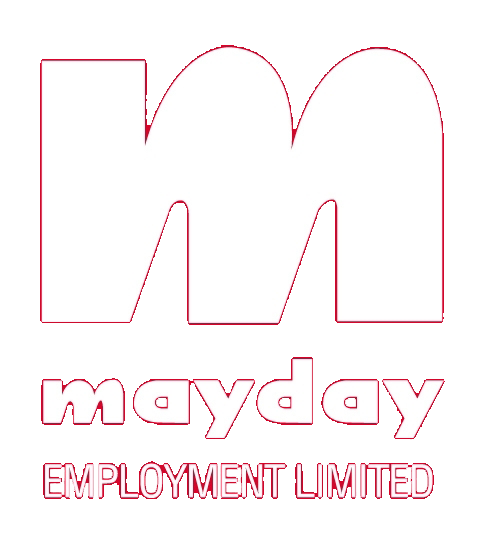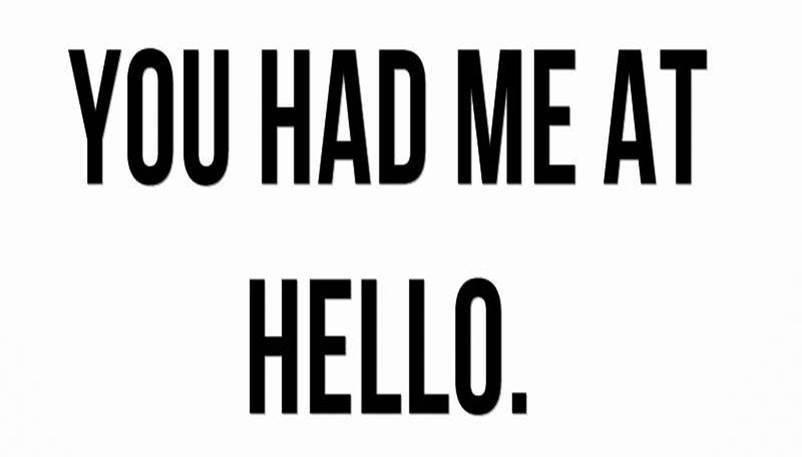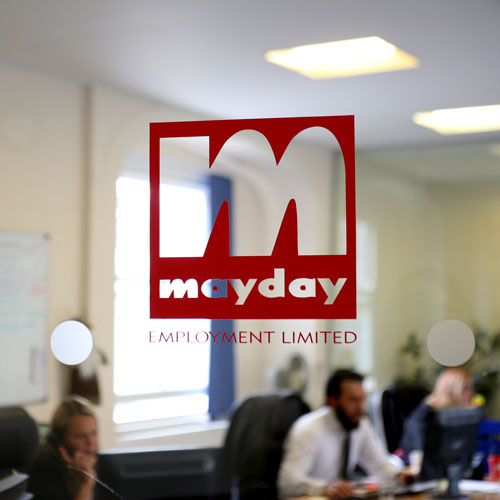A Complete Guide – 10 Simple Steps
- What is a Cover Letter?
- Why do I need to write a Cover Letter?
- Research. Research. Research.
- How to format your Cover Letter.
- How to address your Cover Letter.
- How to structure your Cover Letter.
- Signing off.
- Can I use the same Cover Letter for all of my applications?
- What to do if you are unable to submit a Cover Letter.
- Recruit a second pair of eyes.
Before I begin it is extremely important to emphasise that there is no one-size-fits-all ‘Covering Letter Template’. This life skills complete guide has not been written to offer a potential applicant free, minimal effort templates that simply require a ‘copy and paste’ approach. At Mayday we want to make sure that all of our candidates are given the greatest chance of success when applying for positions. Mayday is able to boast a 97% permanent candidate placement success rate over the past twelve months, following the completion of their probationary period. Mayday’s exceptionally high level of candidate retention stems from our core values of integrity and professionalism. When you combine those values with each consultant’s unrivalled dedication and commitment to the career objectives of each individual applicant, we can guarantee that you will upload your CV with the confidence that it will place you in great stead and miles above your competition. With Mayday you will have total assurance your CV and Covering Letter will be represented the way that you want it to be. This guide is part of our Life Skills project and it should answer any questions you have surrounding your Cover Letter.
What is a Cover Letter?
A cover letter is an essential part of almost every single job application. A Cover Letter is a document that is sent along side your CV. A Cover Letter is your first opportunity to sell your skills and unique abilities to recruiters in a clear and concise manner that ultimately persuades the reader to want to meet you. Your Cover Letter is a personal introduction, providing information as to why you would be suited to the vacancy. It should complement your CV and provide additional details on your qualifications and previous experiences. As your Cover Letter is essentially the first thing a potential employer or recruiter sees when looking at your job application, you must ensure that it highlights your skills and experiences in relation to the role you are applying for. A successful Cover Letter can be the difference between acquiring an interview or sitting in the unknown by the telephone, waiting for that ever-elusive call.
Why do I need to write a Cover Letter?
Without a Cover Letter, you’re relying solely on your CV to make such an impact that the hiring manager will call you back for an interview, is that asking too much? A Cover Letter can strengthen your candidacy and increase your odds of landing that desired interview. It allows you to give the recipient a snapshot of why you are the best candidate for their position. Yes, the ‘Career Objective’ or ‘Professional Summary’ section on your CV can provide a similar overview of your personality, but you are limited to only a few sentences. In the body of the Cover Letter, you have the room to elaborate on your experiences and your interest in the position. That doesn’t mean you need an itemised list of every job and achievement, as a general rule of thumb, if it doesn’t jump off the page, leave it out.
CV’s and job application forms have strict formulas with bullet points and short, choppy statements in character limited boxes. A Cover Letter allows you to write more fluently. Employers like to see that you can communicate well in writing, therefor a proper Cover Letter can display your abilities without the employer or recruiter ever having to refer to your CV. It is key to remember the screening process can be extremely rigorous, so your Cover Letter is an opportunity to grab their attention from the very beginning. Recruiters and employers will often cast aside CV’s that are not accompanied by a Cover Letter, so make sure you go the extra mile and produce a standout piece.
Research. Research. Research.
“By failing to prepare, you are preparing to fail.” Benjamin Franklin
Take some time to research the role that you are applying for and the company. Use this information to tailor your Cover Letter accordingly.
Here are a few key things you should find out before you start writing:
- What does the company do?
- Who are their competitors?
- Who are their target audience?
- What does the role involve?
- What are the essential skills?
- Who am I addressing the letter to?
Once you’ve found the answers to these questions, you will be able to make it clear in your Cover Letter how your skills and abilities match up to what the employer requires. Not only will conducting a thorough background check give you the knowledge you need to tailor your Cover Letter and CV to the style of the company, it also demonstrates that you’ve got a real interest in the specific position and the company. Look at the company’s website, its executives’ Twitter feeds, and employee profiles on LinkedIn. Do some research beyond reading the job description.
Of course your objective is to be offered an interview, but there are several kinds of Cover Letters that can help you achieve that goal and knowing the type you should be writing will help you get yours right. All Cover Letters have a purpose, there is the traditional Cover Letter to reply to an advertised job, a networking Cover Letter, a Cover Letter targeted to recruiters, the direct mail Cover Letter and the pain Cover Letter, (which addresses a specific pain point the company may have and how you would be able to solve it.) Research when to use each type of Cover Letter and incorporate as many types as possible when conducting an active job search. Reflect the company’s culture and core values. Develop the keywords used in the job specification and find a way to make your Cover Letter quantified and appealing to your targeted reader.
Focus on the organisation’s needs, you want to obtain the role that is advertised, but you need to focus on what the employer wants if you hope to succeed. Be very specific in addressing their needs outlined in the job description and show them how you can address their specific requirements. Presenting yourself as a solution to a hiring manager’s problem can help your Cover Letter take the right tone. For example a Sales Adviser can discuss how they will increase the revenue of the company. An Executive Assistant can speak about the problems they solve on a daily basis. An IT Professional can write about how they can improve the efficiency and effectiveness of the systems, thereby saving the company money. Always think: how can I help this organisation?
How to format your Cover Letter.
How you format your Cover Letter, from its content, to the aesthetics is important. Even when applying online or via email, your Cover Letter needs to be properly formatted, readable and without any mistakes. Cover Letters for job applications follow the format of a formal business letter. They are written in paragraph form and include a formal salutation, closing and signature. Each Cover Letter you write should be unique and customised.
A Cover Letter should be 3 or 4 paragraphs at most, aim for half a side of A4, to a maximum of one side and you will be on the right track. If you need to you can adjust the page margins to fit your letter on a single page. When writing your Cover Letter it is important to use a basic font that is easy to read. Depending on the hiring process your Cover Letter may be viewed in an applicant tracking system or another online hiring system. Those systems work best reading simple text rather than over the top, fancy formatting. Using a basic 12 point font will ensure that your Cover Letter is easy to read. Basic fonts like Arial, Verdana, Calibri, and Times New Roman are best suited. Your Cover Letter font should match the font you use in your CV and don’t forget to leave space below your greeting, between each paragraph and after your closing.
How to Address your Cover Letter.
The sender’s address includes the name and address of the Cover Letter’s author. This is to be placed in the top right corner of your document. The recipient hiring manager’s address is to be placed in the top left hand corner, followed by the correct salutation and name.
If you are not sure to whom you should address your Cover Letters, you have a few options. The first is to find out the name of the person you are contacting. If the name is not included on the job listing, you could research the title of the employer or hiring manager on the company website or alternatively you can search on LinkedIn. If there is a contact number, you could call and ask an administrative assistant for the name of the hiring manager. If you unable to discover the name of the contact person at the company, you can either leave the salutation out of your Cover Letter and start with the first paragraph of your letter, or you can use a general salutation. The most common salutation is “Dear,” followed by the recipient’s first name
If you are able to source the correct name, but you aren’t sure of the person’s gender, one option is to include both the first name and the last name in your salutation, without any sort of title that reveals gender. Even if you know the name and gender of the person to whom you are writing, think carefully about what title you will use in your salutation. For example, if the person is a doctor or holds a Ph.D., you might want to address your letter to “Dr. Surname” rather than “Ms. Surname” or “Mr. Surname. “Ms.” is a general title that does not denote marital status, so it works for any female employer. Addressing your letter to the correct person and spelling their name correctly will automatically ingratiate you to the reader and show that you’ve spent some time researching the company and position.
How to structure your Cover Letter.
As it was stressed at the beginning, although there are no set rules on how your Cover Letter should be structured, making sure it flows well is vital if you want to impress. It is important to understand what to include and what to leave out. Remember it is important to highlight relevant past achievements and tailor your cover letter to the vacancy.
Once you have chosen a salutation, follow it with a colon or comma, a space, and then start the first paragraph of your letter. For example:
Dear Hiring Manager,
The opening paragraph should be kept short and to the point. You need to explain why you are contacting the recruiter or hiring manager. It is also useful to include where and how you sourced the advertisement for the position you are applying for. If someone has referred you this is the appropriate time to mention their name. You can also write “Please find enclosed, below or attached my CV for your consideration.
The second paragraph needs to arouse your reader’s curiosity by mentioning points that are likely to be important for the position you are seeking. Show how your education and experience suit the requirements of the position, and by elaborating on a few points from your CV, explain what you could contribute to the organisation. Make it clear why you want the position, enthusiasm conveys personality. Don’t bother applying if you’re not excited about some aspect of the company or role. You are wasting your time sending out 100 CV’s. Find the companies you want to work for and put some heart and soul into it. At the same time, don’t go overboard with the flattery or say anything you don’t mean, authenticity is crucial. Be professional and mature. Another good rule of thumb is to only use the kind of language that the hiring manager would use with one of his customers.
The third paragraph is your opportunity to emphasise what you can bring to the organisation. You should outline your career goals, relating back to the role you are applying for and expand on pertinent points in your CV including examples to back up your claims. Address any gaps in your CV or highlight that you are making a career change, it is better to explain that you had a career break top start your own business and it failed or to mention that you have been travelling rather than leave a gap that requires an explanation. This is the best time to indicate that you would like to meet the employer for an interview.
End positively and express that you look forward to hearing their response and that you wish to discuss the role further. It is also worth mentioning any dates that you would not be able to attend an interview. The closing sentence should be signed off with ‘Yours sincerely’ if you know the name of the hiring manager. Alternatively it should be signed off with ‘Yours faithfully’ if you do not know the name of the recipient of the letter.
Signing Off.
When you’re sending a written Cover Letter, in a formal style of application, it must include a heading, salutation, the body of the letter, closing and your signature. You only need to include a handwritten signature on a letter that is printed out and mailed. If you’re sending an email Cover Letter or enquiry letter, it’s a good idea to include your contact information in your closing paragraph, or after your typed signature, so it’s easy for the employer or networking contact to get in touch with you. When you send a paper Cover Letter or upload a document to a job site to apply for a job, you need less information in your signature than in an email message. This is because the heading of your Cover Letter includes your contact information.
Can I use the same letter for all of my applications?
The resounding answer to this question is NO! Under no circumstance should you ‘copy and paste’ your Cover Letter across applications. Don’t use generic lines like, ‘My name is and I am applying for the position as ’. All this serves to do is bore the person looking over your application and you’ll most likely be passed over for a more original and exciting candidate. Show that you have put in the time and effort, it doesn’t go unnoticed.
What to do if you are unable submit a Cover Letter.
In the black hole of an online system, the rules may be different. Many companies now use online application systems that don’t allow for a Cover Letter. You may be able to figure out how to include one in the same document as your CV but that is not a guarantee, especially because some systems only allow for data to be entered into specific boxes. In these cases, use the format you have been given to demonstrate your ability to do the job and your enthusiasm for the role. If possible, try to find someone who you can send a brief follow-up email to, highlighting a few key points about your application. If you are sending your Cover Letter as an email, save your contact details for your signature at the bottom of the page.
Get a second pair of eyes.
How you absolutely do not want to be remembered is as the person that submitted the sloppy Cover Letter. So proof, proof, and proof again, or enlist a second pair of eyes to review your Cover Letter with a fresh outlook. A typo, grammar mistake or misspelling can really standout and leave a bad first impression. Don’t give the hiring manager any chance to dismiss all of your efforts because of a few simple mistakes.
Written By:
Kristian Fenwick
Business Development Manager





